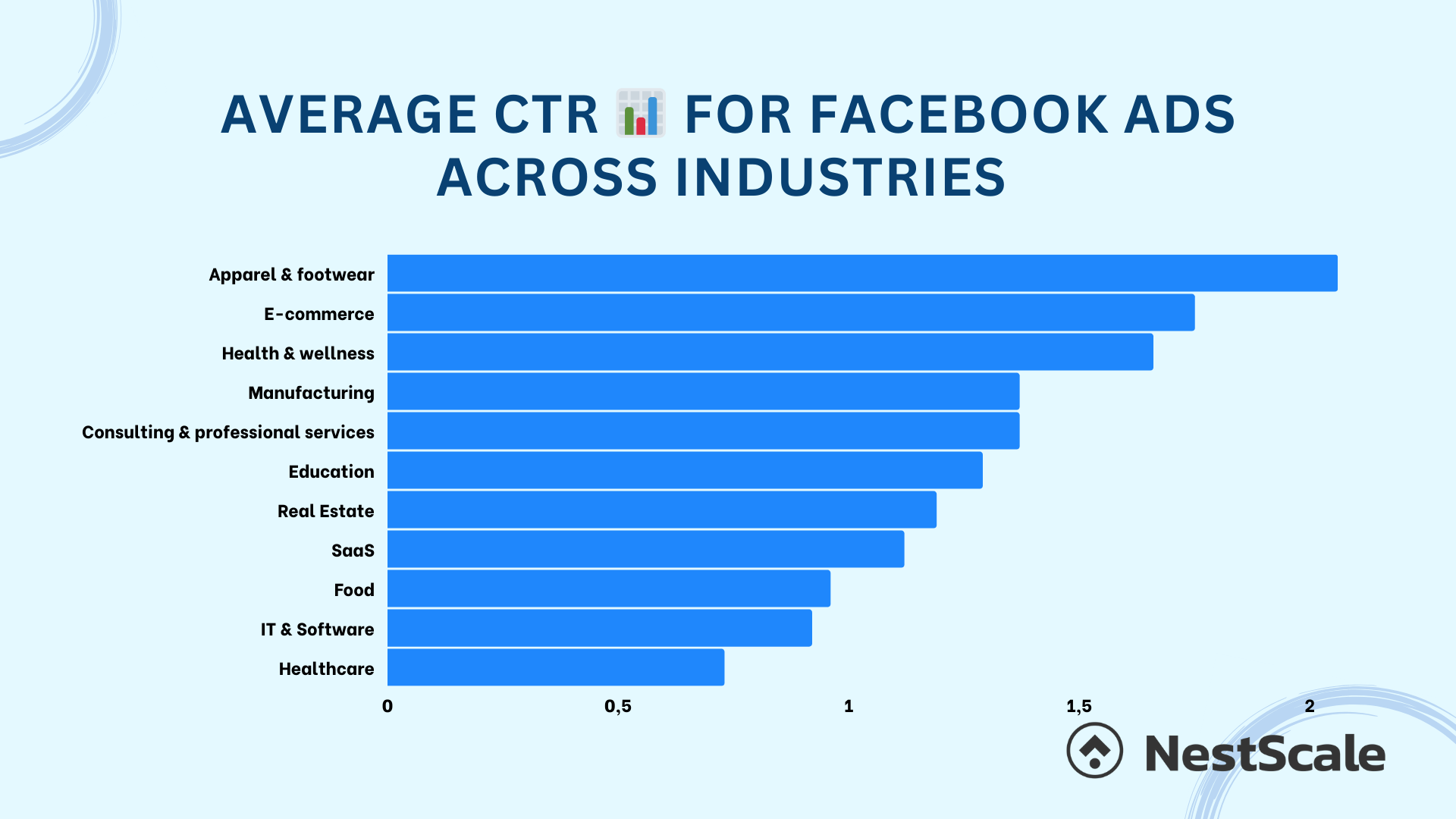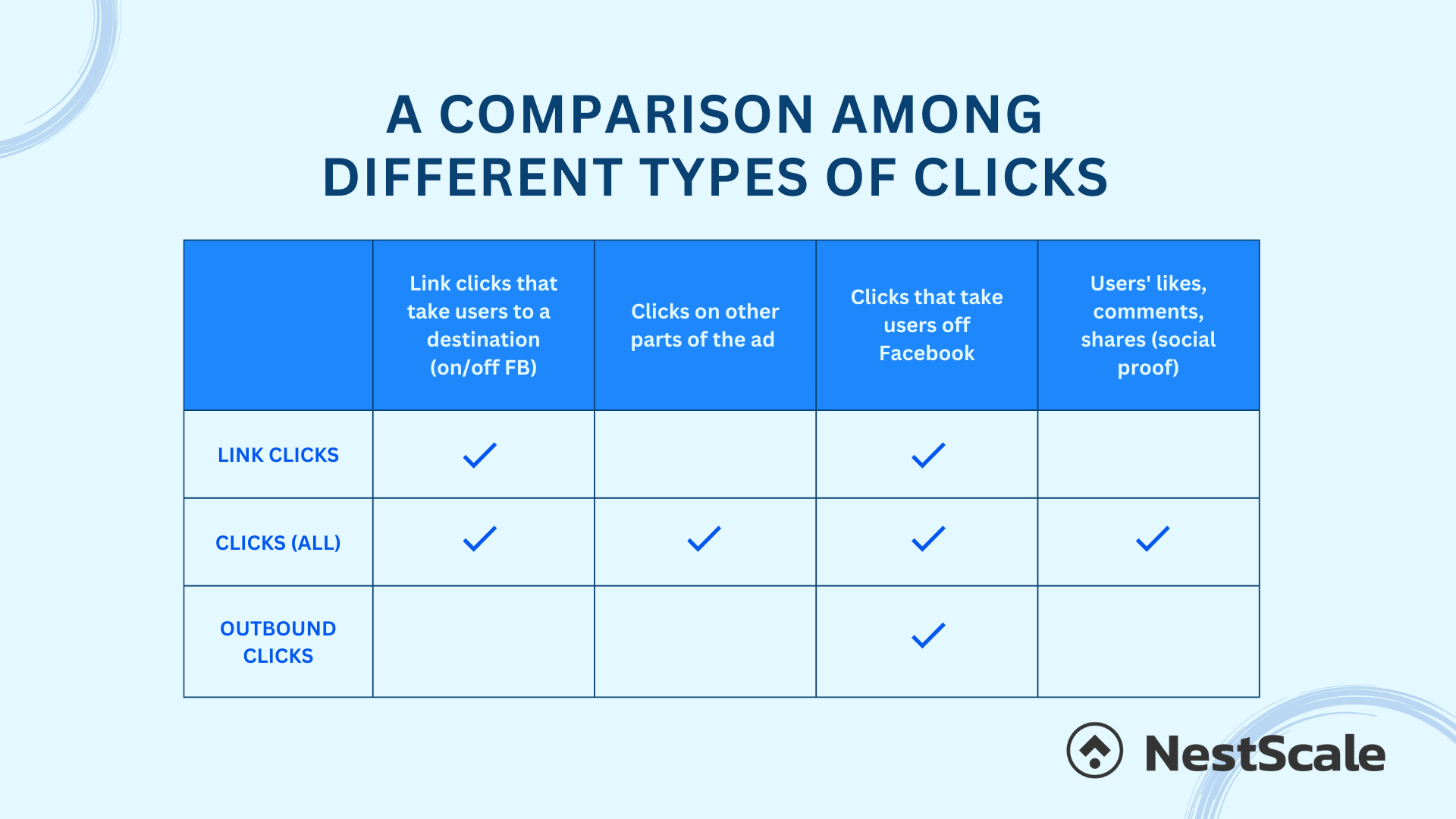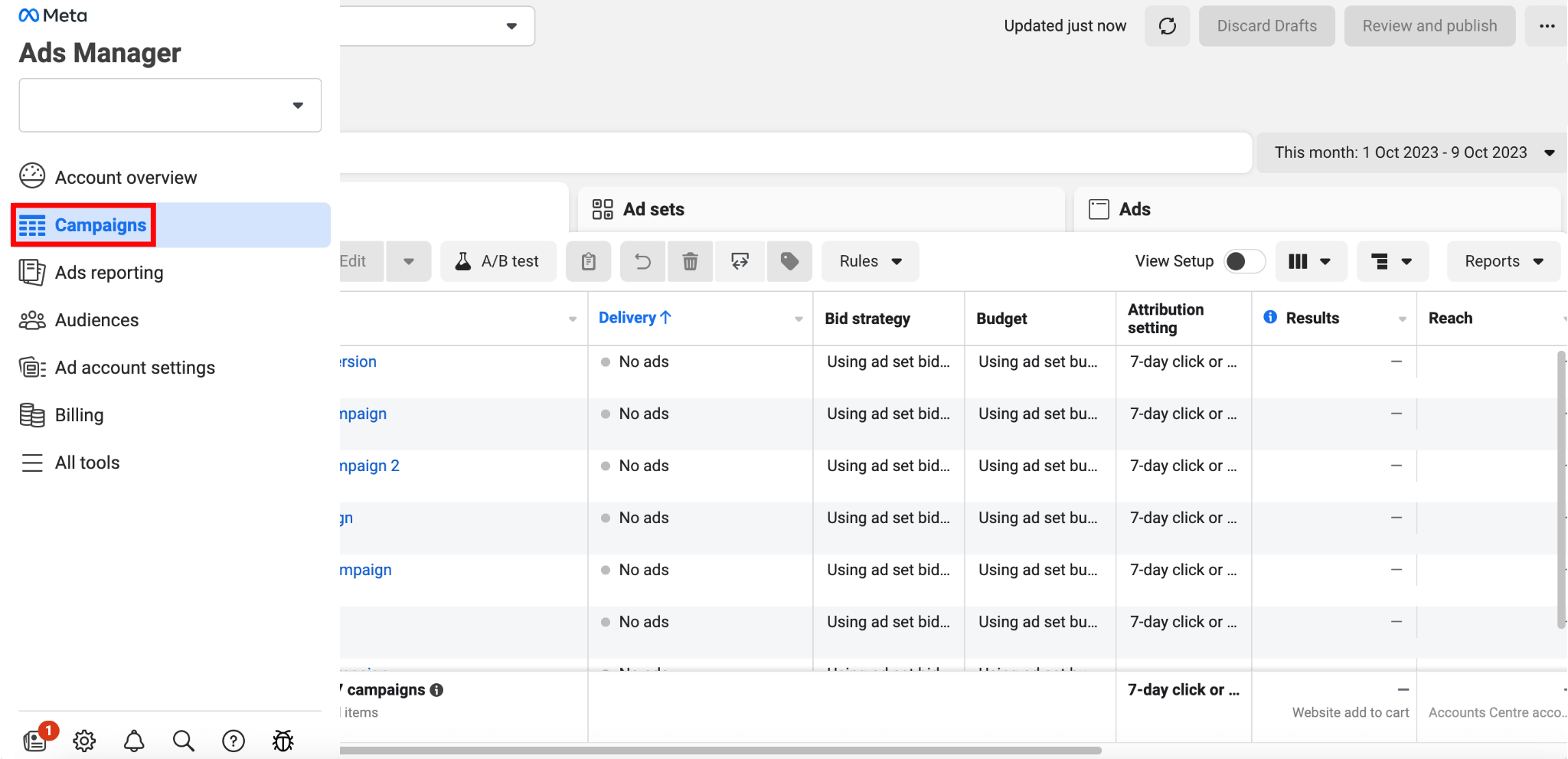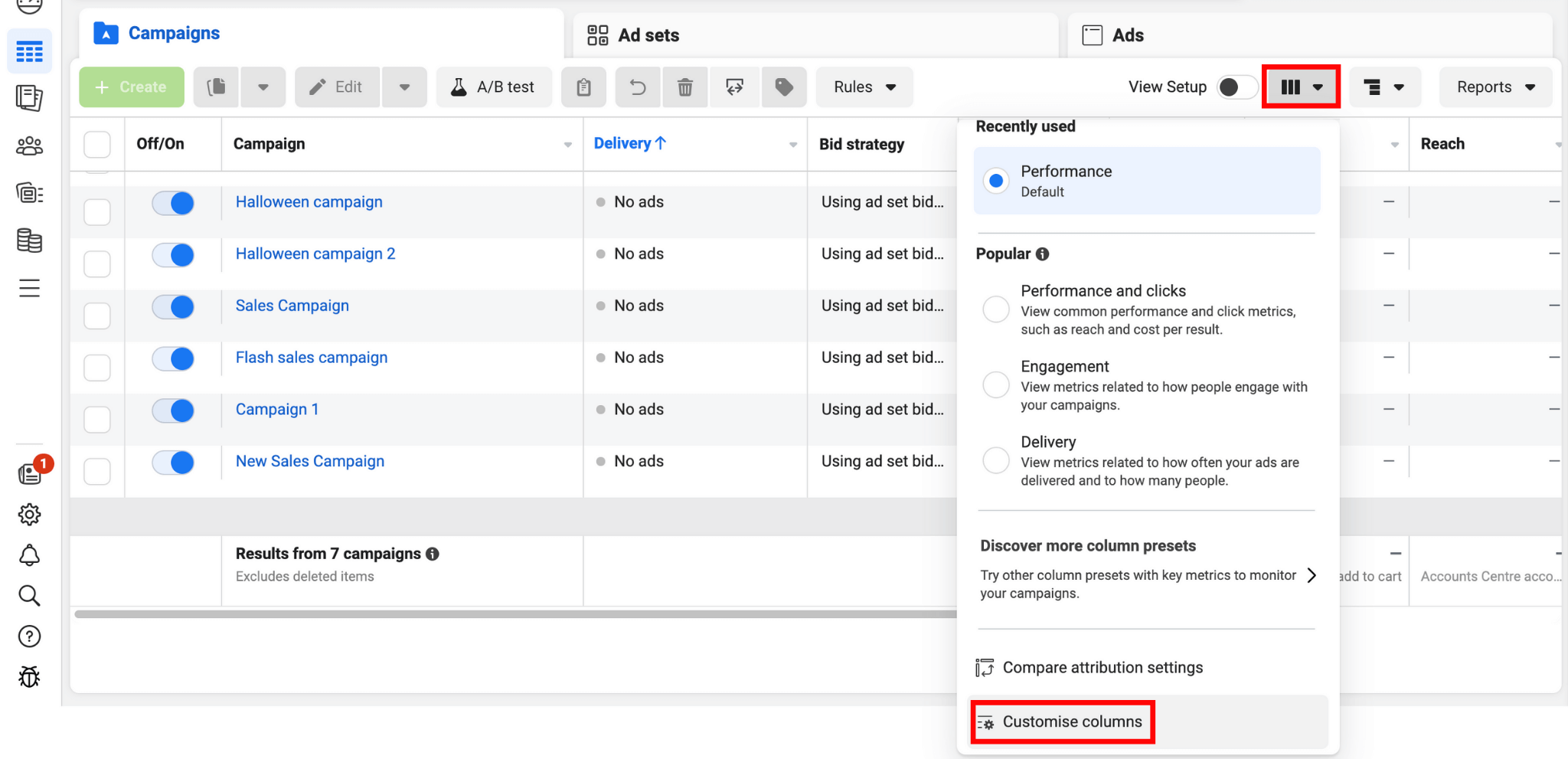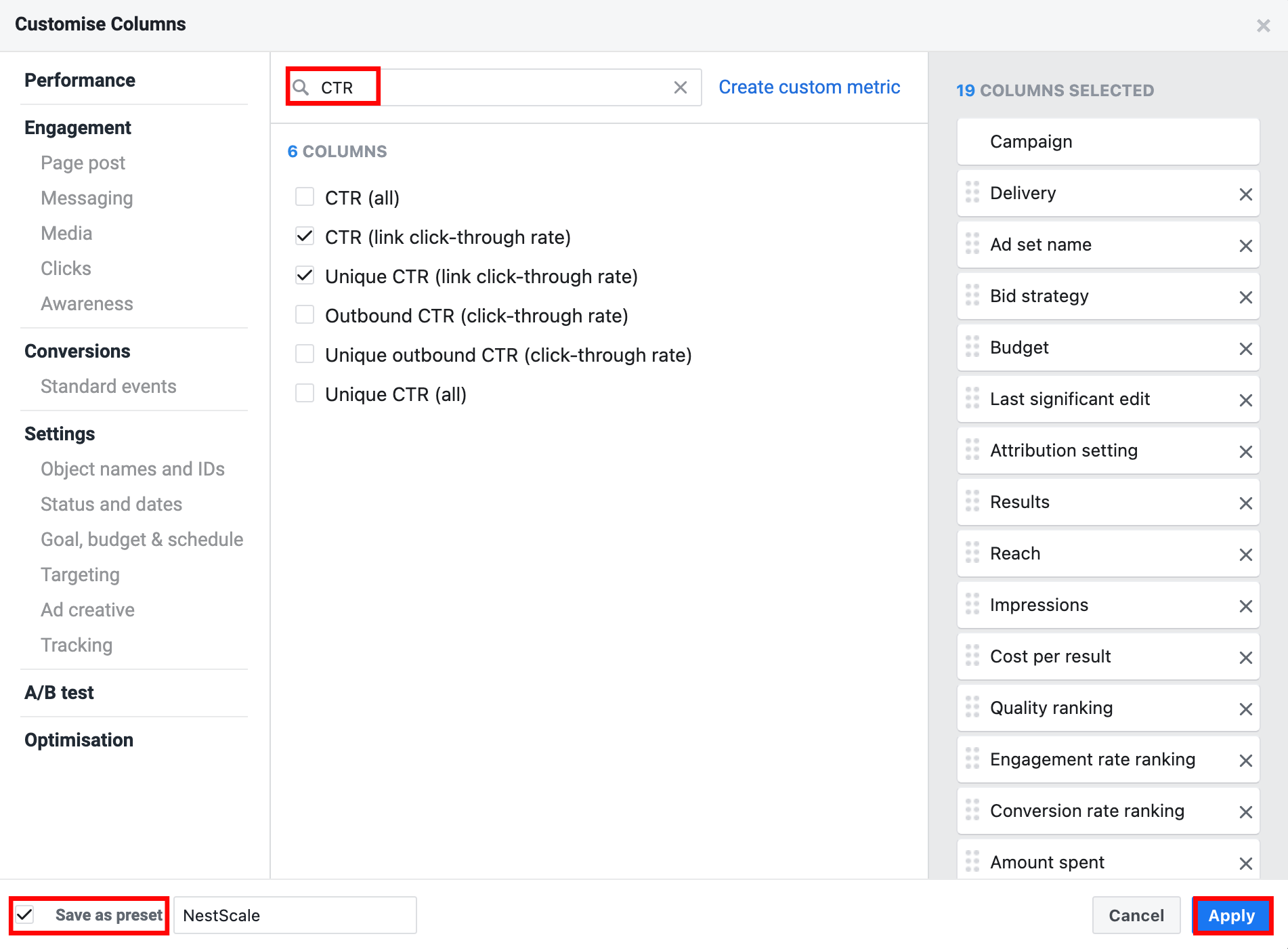If you take part in online selling or have ventured into advertising on platforms like Facebook, you’ve probably come across the term “click-through rate” or CTR. It’s a crucial metric for measuring the success of online ad campaigns, and many businesses strive for an above-average CTR. So, is there an average CTR for Facebook Ads? And if so, how can you improve it? In today’s blog post, we’ll break down the concept of CTR in Facebook Ads. First, we’ll explore the average CTR and explain how to calculate it. Then we’ll guide you on locating your CTR in Ads Manager, and provide tips on boosting your CTR. Let’s dive in!
What is CTR in Facebook Ads?
First, click-through rate (CTR), by definition, refers to the number of times users have clicked on your ad after seeing it on their Facebook page. CTR essentially measures the percentage of clicks over the total number of times the ad was displayed (impressions).
When running an ad campaign on Facebook, marketers will need to rely on all sorts of ad metrics to determine if their strategies are working. CTR is among the most widely-used ones as it signals if your ads are compelling and prompts viewers to take action. Based on your CTR, businesses can make timely adjustments to their ads to further optimize their strategy and yield better results.
Average CTR for Facebook Ads
So, what’s the average CTR for Facebook Ads? Actually, this number can vary significantly across different industries and ad types. Factors such as competition, audience demographics, and the quality of the ad content also play a part in influencing a business’s CTR. Especially for the Facebook market, where competition is as stiff as ever. According to many sources, as of 2023, Facebook has over 10 million active advertisers. This huge population of advertisers can lead to a highly competitive market. Which will eventually lead to lower average CTRs due to increased ad saturation.
With that being said, there is a certain benchmark CTR for Facebook ads based on industry. According to a Statista report on Facebook advertising click-through rate (CTR) by industry worldwide in March 2023, we can calculate an overall average Facebook ads CTR for all industries at 1.27%. As we can see, Apparel & footwear has the highest CTR at 2.06%. The 2 closest runners-up are E-commerce and Health and wellness at 1.75% and 1.66% respectively. The impressive numbers could be because of the high-quality ad creatives showcasing attractive models, a strategy that excels on visually-driven platforms such as Facebook and Instagram.
Meanwhile, this number is the lowest for the Healthcare industry at 0.73%. This number suggests that businesses and advertisers in this sector may need to reconsider their ad strategies, and audience demographics or even research more appropriate platforms to market their products.
The 6 types of CTR
Another interesting thing is that there isn’t just one CTR. At the moment, Facebook offers 6 different CTR metrics in Ads Manager. All of these metrics represent the ratio between clicks and impressions. However, each of them slightly differs from each other based on the specific type of clicks considered.
CTR (link click-through rate)
Link click-through refers to the number of clicks on links to a certain destination (eg: website, page) or experience, both on or off Facebook. Some examples of link click-through include:
- A user clicks on a Shop Now button on your ad and goes to your website
- A user clicks on the main image of your ad and is shown an instant experience in full-screen video form
- A user clicks on a Contact Us button on your ad and is taken to Messenger
- A user clicks on your online store link in the caption of an ad post
CTR (all)
The “all” here refers to both link click-through and clicks on other parts of your Facebook ad. Since CTR(All) includes more click types, the number shown might be higher than CTR (link click-through). Some of the following actions may be measured under clicks (all):
- Link click-through
- A user leaves a like, comment, or share on your ad
- A user clicks on your ad creatives to expand it or see it better
- A user clicks on your page name to access your Facebook page
Unique CTR (link click-through rate)
Unique CTR (link click-through rate) measures the number of unique people who have clicked on a link. The interesting thing about this metric is that it includes Accounts Centre accounts (individual Facebook or Instagram accounts), not actions. This metric is estimated by taking sampled data of unique link clicks divided by reach. Reach here refers to the number of Accounts Centre accounts that have seen your ads at least once.
* An Accounts Centre account: An Accounts Centre account in the Meta ecosystem is like a hub where you can group together your Facebook and Instagram accounts. It can be a single Facebook or Instagram account that’s not part of an Accounts Centre or a bigger Accounts Centre account that includes multiple individual accounts within it.
Unique CTR (all)
Similar to regular CTR (all), this metric covers all types of clicks, from link click-through to clicks on other parts of your Facebook ad. The main difference is this number is estimated by taking sampled data of unique clicks and dividing by reach, not impressions.
Outbound CTR (link click-through rate)
This is one of those metrics that not many people know about. Outbound link click-through takes into account the link clicks that take a user off Facebook. This number is calculated by taking link clicks that take visitors off Facebook divided by impressions. Some cases that can be considered outbound link click-through are:
- A user clicks on a CTA button on your Facebook ad and is taken to your website or landing page
- A user clicks on a link in your Facebook ad caption and fills in a lead generation form outside of Facebook
Unique outbound CTR (link click-through rate)
Similar to other unique CTR metrics, this number also measures the number of individual Account Centre accounts that saw your ad. However, the action is only calculated if a link click takes the users off Facebook. The formula to calculate this metric is to take unique outbound clicks divided by reach.
You might be asking yourself “What’s the point of having so many types of CTR?”. To be honest, I used to wonder about that too. However, each of these metrics serves a different purpose, which allows marketers to tailor specific parts of their advertising strategy to achieve the best final result. With that being said, if you’re only looking to monitor the overall performance of your ad, CTR (link click-through) or CTR (all) might be the best and most straightforward option.
How to calculate CTR in Facebook Ads
As a marketer, one of the most important things you must know is how to calculate different Facebook ad metrics in your Facebook ads reports. Once you’ve got a firm grasp on the various elements that make up each metric, you’ll gain profound insights into precisely where your ad campaigns could use a little extra attention and fine-tuning.
General formula to calculate CTR for Facebook ads
As we have explained above, there are in total 6 types of CTR in Facebook ads. Each metric will differ slightly from each other in terms of the components. However, the general formula for CTR is:
Total clicks: can be either all clicks, link clicks, or outbound link clicks depending on the type of metrics.
Total impressions: refers to the number of times your ad was viewed on a user’s timeline. This metric might include repeated views from each Accounts Centre account.
For example, let’s say brand A’s ad has a total of 1000 impressions and 100 clicks. In this case, the click-through rate (CTR) of brand A’s ad equals (100/1000) * 100, which is 10%. So out of the 1000 times that brand A’s ad was displayed, 10% of them resulted in a click.
Formula to calculate unique CTR
Above is the most common formula to measure CTR in Facebook ads. However, as we have discussed, there are some variations of CTR that require different formulas based on its components. For all unique CTR, we have to substitute impressions for reach. This is because the unique CTR metrics only take into account the person (aka individual Accounts Centre accounts), not action. It’s also worth mentioning that Facebook will only estimate this metric using sampled data, so it might not be 100% accurate in all cases. The new formula will be:
Clicks: can be either all clicks, link clicks or outbound link clicks depending on the type of metrics.
Total reach: refers to the number of Accounts Centre accounts that have seen your ad at least once.
For example, let’s say brand A wants to find out its Outbound unique CTR (link click-through rate). Its outbound link clicks are 100, total reach is 1000. So, the Outbound unique CTR will be (100/ 1000) * 10, which equals to 10%. This means that out of the 1000 Account Centre accounts that had viewed brand A’s ad. 10% of them clicked on the ad.
How to find CTR in Facebook Ads Manager
Now that you know how to calculate click-through rate, we’ll move on to how you can locate this metric in Facebook Ads Manager. There are several ways to go about this, however, this is the most straightforward and easy way to monitor your ad CTR.
Step 1: Access Facebook Ads Manager. Once there, go to Campaigns via the left-hand side menu.
Step 2: Choose the level (campaign, ad set, ad) you want to monitor. Once here, remember to customize your preferred time frame by opening thẻ dropdown option and choose your timeframe.
Step 3: Customize columns to include CTR. Click on the Column: Performance button and choose Customize columns from the drop-down options.
Step 4: Here, search for CTR in the search bar. Tick the boxes next to the metrics you want. Remember to hit Apply to save. You could also save it as a preset for future usage.
What is a good CTR for Facebook Ads?
Now that we’ve delved into the world of Click-Through Rate (CTR), it’s only natural to wonder: What makes for a good CTR? Well, the truth is, there’s no one-size-fits-all answer. The ideal CTR can vary significantly depending on the type of business or industry you’re in. It might fall anywhere between 1% to 15% or even higher. In reality, there’s no fixed rulebook to definitively label a click-through rate as good or bad. Instead, it’s a nuanced evaluation that considers a range of factors like seasonal fluctuations, sales trends, audience targeting, and many more.
That said, as we mentioned earlier, the current average CTR across industries hovers around 1.27%. So, if your CTR matches or surpasses this benchmark, there’s no need to lose sleep over it. What matters more is keeping a vigilant eye on performance trends over time and regularly fine-tuning your ads for optimal results. By doing so, you’ll be on the right track to success.
How to increase CTR for Facebook Ads?
One of the most frequently asked questions for marketers is “How to increase CTR in Facebook ads?”. Getting a customer to click on your ad is half the challenge already. If the customer isn’t interested in the first place, they wouldn’t have clicked on the ad, let alone purchase your product or service. So it’s one of the most important parts of any business’s advertising plan, to make sure that their CTR is consistent and improving. So, how can we achieve this? Here’s a comprehensive guide on how to boost your CTR.
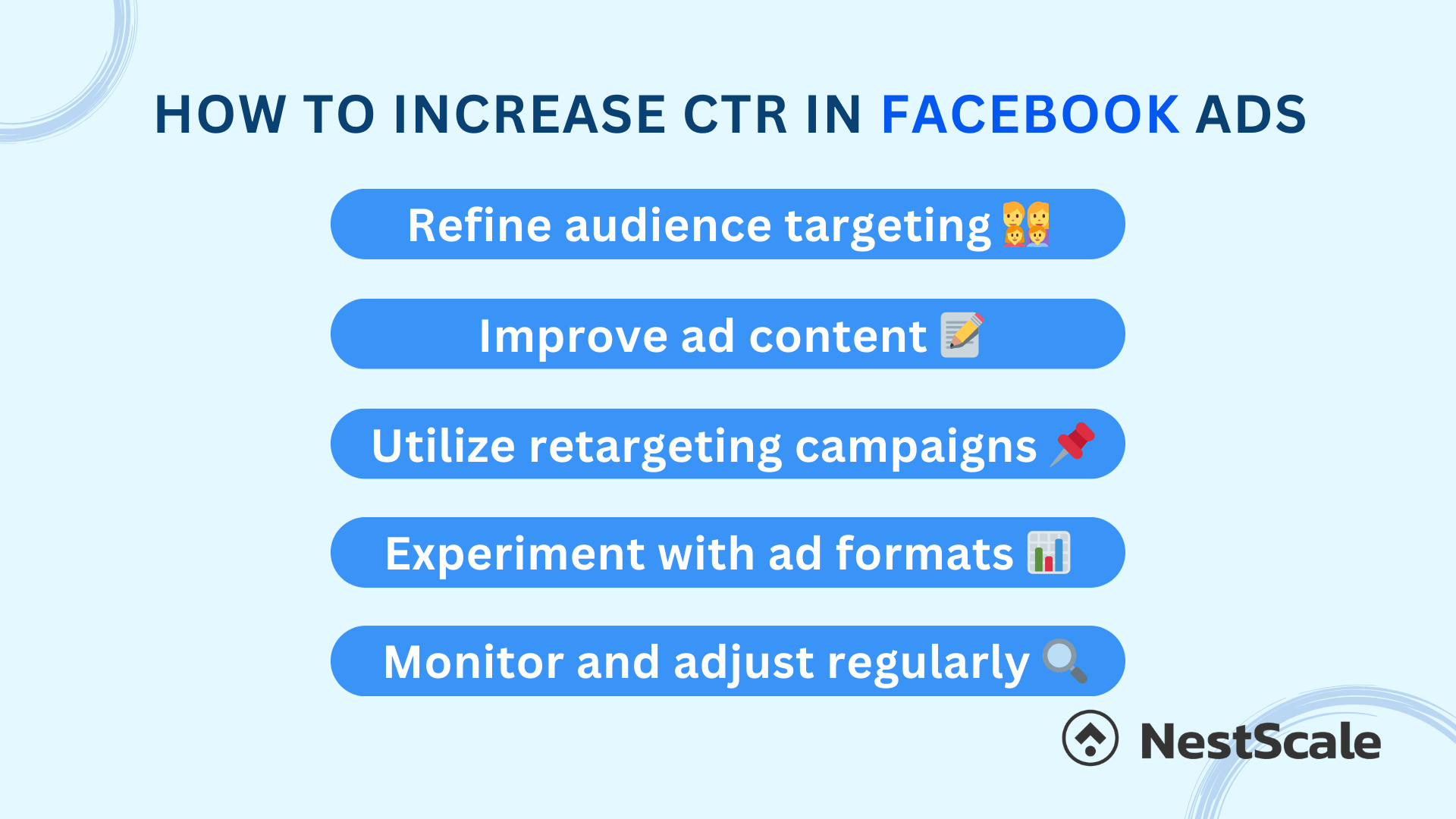
Refine your audience targeting
Sometimes, a too-large target audience might result in your CTR taking a hit. A tip in these cases is to narrow your audience size and make sure that you’re targeting the most relevant audience for your products or services. You can also analyze who has been interacting with your ads in terms of their demographics, interests, and behaviors based on past ad performance. Another solution is to consider using custom audiences that are already familiar with your brand, such as past customers or website visitors. These are the groups that often have a higher likelihood of engaging with your ads.
Improve your ad content
With the increasingly competitive online advertising climate, continuously fine-tuning your ad content should go without saying. Every part of your ad creative should be accounted for. Craft attention-grabbing headlines that pique the interest of your audience. Use clear, concise, and enticing language to compel users to click. In addition, ensure the high quality of your visuals and creative elements. They should be visually appealing and relevant to your ad’s message. Lastly, Include a clear and persuasive CTA in your ad such as “Shop Now” “Learn More” or “Get Started”, prompting users to take a specific action.
Utilize retargeting campaigns
Another tactic you can utilize is to implement retargeting campaigns. This way, you can re-engage users who have interacted with your website or previous ads but didn’t convert. Once the audience is aware of your business, they are generally more likely to click on ads and convert.
Experiment with ad formats
Facebook offers various ad formats, including carousel ads, video ads, slideshow ads, and more. Experiment with different formats to discover which ones resonate best with your audience. You can also utilize interactive elements within your ads, such as polls or interactive forms, to engage users and encourage clicks. Try conducting A/B tests with multiple creative types within one campaign to see which ones are driving the most engagement.
Monitor and adjust regularly
Once you have got the experiment down, it’s time to monitor your ads’ performance and allocate appropriate budgets to the most effective ads and audiences based on performance data. At the ad level, advertisers should pay close attention to CTR as this metric usually suggests the appeal and effectiveness of an ad’s content. You should also take into account metrics like add-to-cart or conversion rate to see if your content not only grabs the audience’s attention but also turns them into active buyers.
In summary, increasing CTR in Facebook Ads requires a multifaceted approach that involves audience targeting, compelling creatives, seamless user experiences, experimentation, monitoring, and optimization. By continuously refining your ad campaigns using these strategies, you can boost CTR, drive more traffic, and achieve better results in your Facebook advertising efforts. Remember that CTR improvement is an ongoing process, and staying agile and responsive to user feedback and market changes is key to long-term success.
How to make the most of your Facebook Ads campaign?
In summary, there isn’t a one-size-fits-all average CTR for Facebook Ads. Your CTR depends heavily on factors such as your industry and the types of ads you’re running. It’s essential to know your Facebook ad CTR benchmark and how to improve it for better results.
But let’s face it, not every business has enough time and resources to monitor and optimize their ad campaigns constantly. This is precisely where NestAds steps in – our comprehensive advertising management and marketing attribution software. With NestAds, you can gain invaluable insights into your ad performance while streamlining all your advertising efforts.
Notably, NestAds goes beyond just Facebook Ads, extending its reach across multiple advertising platforms. This means you can effortlessly monitor and analyze your campaigns on various platforms, empowering you to make data-driven decisions that yield superior results.
So, are you ready to take your advertising strategy to the next level? Elevate your Facebook Ads game with NestAds today and watch your campaigns soar!





































